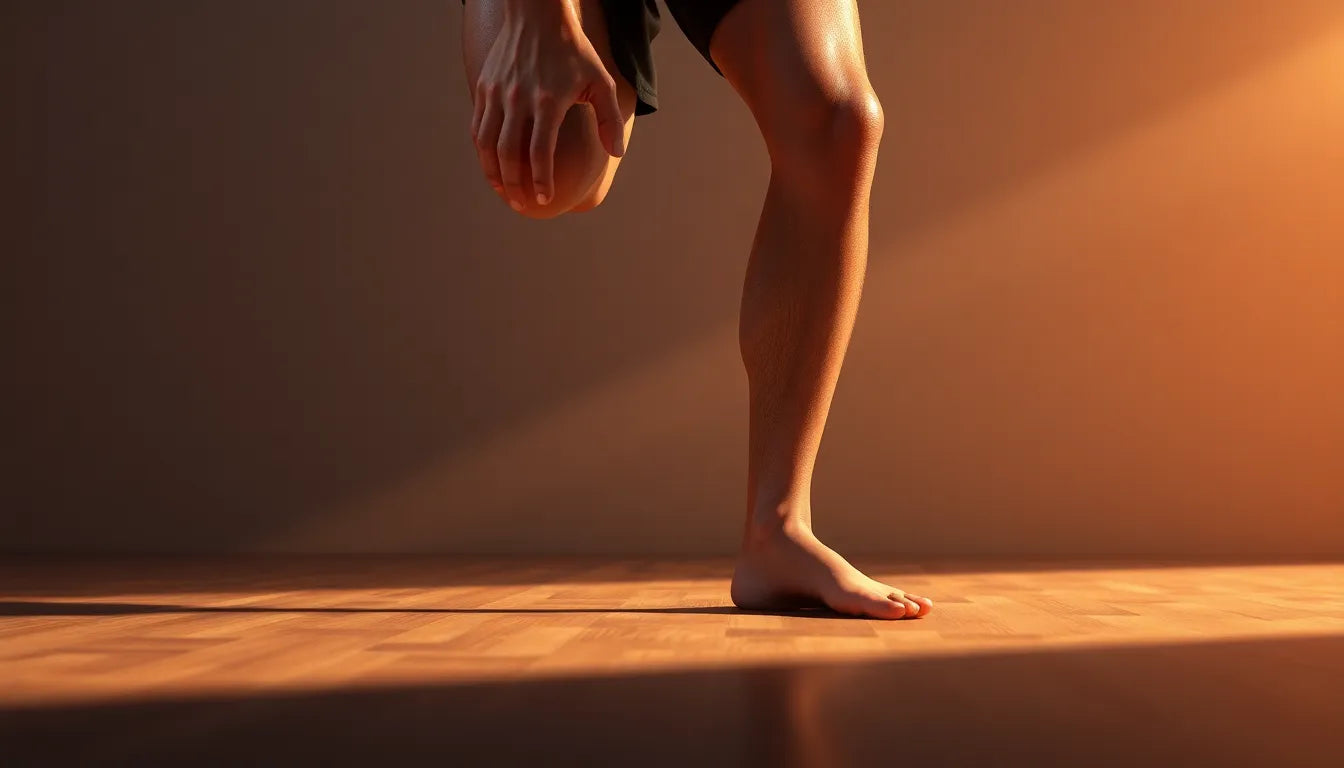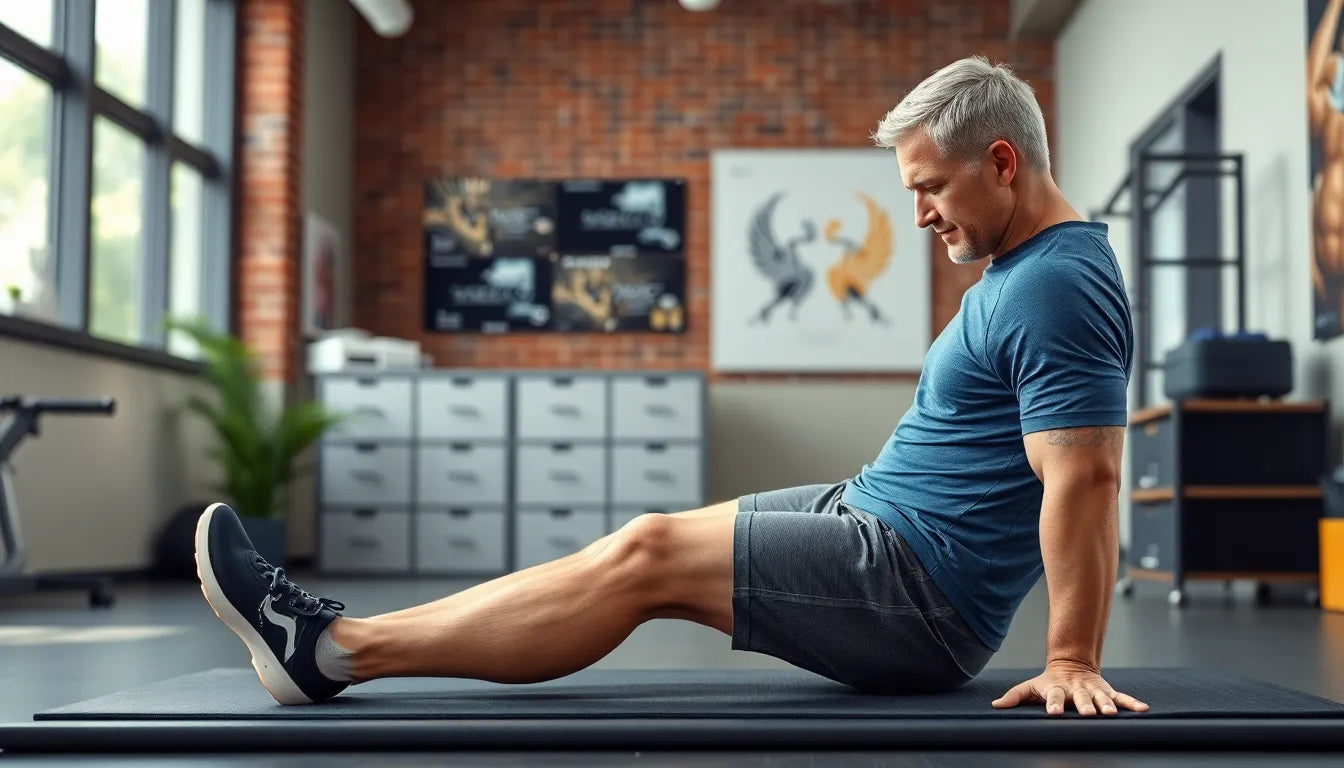Badminton is a high-intensity sport that demands agility, speed, and precision. With its rapid movements, sudden stops, and explosive jumps, the game places significant stress on muscles and joints. After engaging in such a physically demanding activity, it is crucial to prioritize recovery to maintain peak performance and prevent injuries. This is where the importance of stretching after badminton comes into play.
why stretching is crucial after a badminton match
Stretching post-badminton serves as a vital component of your recovery routine. It helps reduce muscle tension, enhance blood circulation, and improve overall flexibility. These benefits are essential for both immediate recovery and long-term injury prevention. By incorporating stretching into your post-game routine, you can significantly decrease the risk of strains and sprains, which are common in the sport due to its dynamic nature.
While dynamic stretching is typically used during warm-ups to prepare the body for activity, static stretching is recommended after playing badminton. Static stretching involves holding a stretch for a certain period, allowing the muscles to relax and elongate. This method is particularly effective in addressing the muscle groups most affected by badminton, such as the legs, back, and shoulders.
targeting key muscle groups
Badminton primarily stresses the muscles in the legs, including the quadriceps, hamstrings, glutes, and hip flexors. Additionally, the back and shoulders endure significant strain due to the overhead shots and quick directional changes. Therefore, focusing on these areas during your stretching routine is essential for optimal recovery.
In the following sections, we will delve into specific stretching exercises tailored to these muscle groups, providing you with a comprehensive guide to post-badminton recovery. By incorporating these exercises into your routine, you can enhance your flexibility, reduce muscle soreness, and ultimately improve your performance on the court.
benefits of post-badminton stretching
Engaging in regular stretching after playing badminton offers numerous advantages that extend beyond immediate muscle relief. According to insights from resources like Anodyne.dk and OptimaSport, incorporating stretching into your routine can lead to enhanced athletic performance and a decreased risk of injuries. Stretching not only helps in maintaining flexibility but also plays a vital role in muscle recovery by reducing stiffness and promoting efficient blood flow to the muscles.
For badminton players of all levels, integrating stretching into their routine is straightforward and highly beneficial. Regular stretching can lead to significant improvements in muscle elasticity and joint range of motion, which are crucial for executing powerful shots and quick footwork on the court. Moreover, it contributes to better posture and alignment, reducing the potential for strain and discomfort during play.
exercise guide: effective stretching techniques
1. foam rolling for quads and hamstrings
Foam rolling is an excellent technique for releasing tension and increasing circulation in the quads and hamstrings, which are heavily used during badminton. To perform this exercise, lie face down with a foam roller positioned under your thighs. Use your arms to support your weight and slowly roll from your hips to your knees. Spend extra time on areas that feel particularly tight, as this will help in loosening any knots and enhancing muscle recovery.
2. glute stretch (ballestræk)
The glute stretch, also known as ballestræk, is a simple yet effective exercise that targets the glutes and lower back. Sit on the floor and cross one leg over the opposite knee. Gently pull the crossed knee towards your chest, holding the stretch for about 30 seconds before switching sides. This stretch is particularly beneficial for relieving tension in the lower body, which can accumulate from the quick lateral movements in badminton.
3. quad and hip flexor stretch
This stretch targets the front of the thighs and hip flexors, which are crucial for maintaining agility and balance during a match. Begin by kneeling on one knee, with the other foot planted firmly in front of you. Reach back and grasp the ankle of the kneeling leg, gently pushing your hips forward until you feel a stretch along the front of your thigh. Hold this position for 30 seconds and then switch to the other leg. This exercise not only aids in muscle recovery but also enhances flexibility in the hip region.
4. shoulder stretch
To alleviate shoulder tension, which is common due to the overhead shots in badminton, incorporate a simple shoulder stretch into your routine. Extend one arm across your body and use the opposite arm to gently press it towards your chest. Hold the stretch for 30 seconds before switching arms. This exercise helps in maintaining shoulder mobility and can prevent injuries associated with repetitive arm movements.
By following these targeted stretching exercises, you can effectively address the muscle groups most impacted by badminton. Consistent practice will lead to improved flexibility, reduced muscle soreness, and enhanced overall performance. In the next section, we will explore additional tips for effective stretching and address common questions regarding post-badminton recovery.

Men's Posture Shirt™ - Black
Stimulates muscles, relieves pain, and supports your posture during activity and recovery.

Women's Posture Shirt™ - Nude
Supports, activates muscles, and improves posture for performance and pain relief.
additional tips for effective stretching after badminton
Incorporating stretching into your post-badminton routine is essential, but there are additional strategies and tools that can further enhance your recovery and flexibility. Engaging in supplemental activities such as yoga and pilates can significantly improve your flexibility and core strength, which are both beneficial for badminton players. These activities focus on controlled movements and breathing, which enhance muscle elasticity and joint stability.
Consistency is key when it comes to stretching. Establishing a regular routine will not only improve your flexibility but also reduce the risk of injuries over time. Consider using tools like foam rollers and massage guns to deepen your stretches and aid muscle recovery. Foam rollers are excellent for self-myofascial release, helping to relieve muscle tightness and improve blood circulation. Massage guns can target specific muscle groups, providing a deeper massage that can enhance recovery and reduce soreness.
It's also important to listen to your body and adjust your stretching routine according to your specific needs and any discomfort you may experience. Stretching should never be painful; if you feel pain, ease off the stretch and reassess your technique. Proper form and gradual progression in your stretches will yield the best results.
frequently asked questions
how long should I stretch after playing badminton?
Ideally, spend about 10-15 minutes stretching post-game to ensure thorough muscle relaxation and recovery. This time frame allows you to address all major muscle groups effectively.
what equipment is best for stretching?
Foam rollers and resistance bands are excellent tools for enhancing stretching routines. They help target deeper muscle layers and provide support for various exercises, making your stretches more effective and beneficial.
can stretching prevent injuries in badminton?
Yes, regular stretching can significantly reduce the risk of injuries by maintaining muscle flexibility and joint mobility, which are crucial in a high-impact sport like badminton. Stretching helps prepare your body for the demands of the game, reducing the likelihood of strains and sprains.
is it necessary to stretch every time after playing badminton?
While it may not always be possible to stretch after every session, making it a regular habit is highly recommended. Consistent stretching helps maintain flexibility, reduces muscle stiffness, and enhances overall performance, making it a valuable part of your routine.
conclusion
Integrating post-badminton stretching into your routine is a vital step towards maintaining optimal performance and long-term health. By following the exercises and tips outlined in this guide, you can enhance your flexibility, reduce muscle soreness, and prevent injuries. Encourage yourself to explore additional resources and consider ergonomic aids from Anodyne for enhanced recovery and injury prevention. Remember, a consistent stretching routine is key to stretching into victory on the badminton court.
Kilder
- Hansen, L. (2023). ”Styrk din spil med et effektivt badminton træningsprogram.” Granit Bordplade.
- Jensen, M. (2023). ”Restitution og badminton.” Optima Sport.
- Larsen, P. (2023). ”Effektive træningsøvelser til badminton.” Køkkenvægte.
- Nielsen, S. (2023). ”Udstrækning efter løb som lindrer spændinger og forebygger skader.” Intersport.
- Dansk Badminton Forbund. (2023). Træningsprogrammer for unge. Bevæg dig for livet.
- Sørensen, T. (2023). ”Gør dine badminton træningsøvelser mere effektive.” Boligen i Blomst.
- Badminton Danmark. (2024). ”Optimer din badmintontræning med nyt og gratis e-materiale.” Badminton Danmark.


















